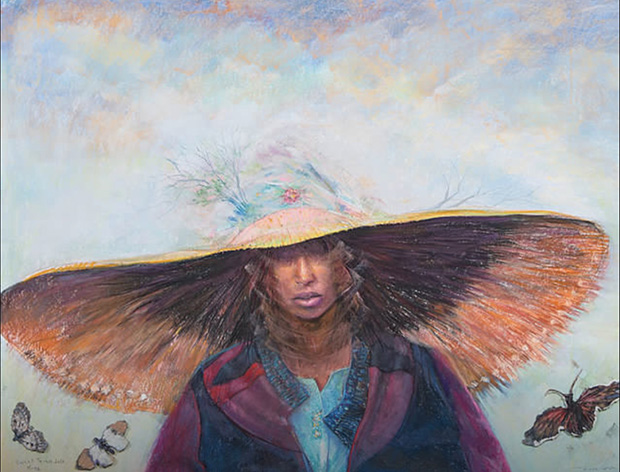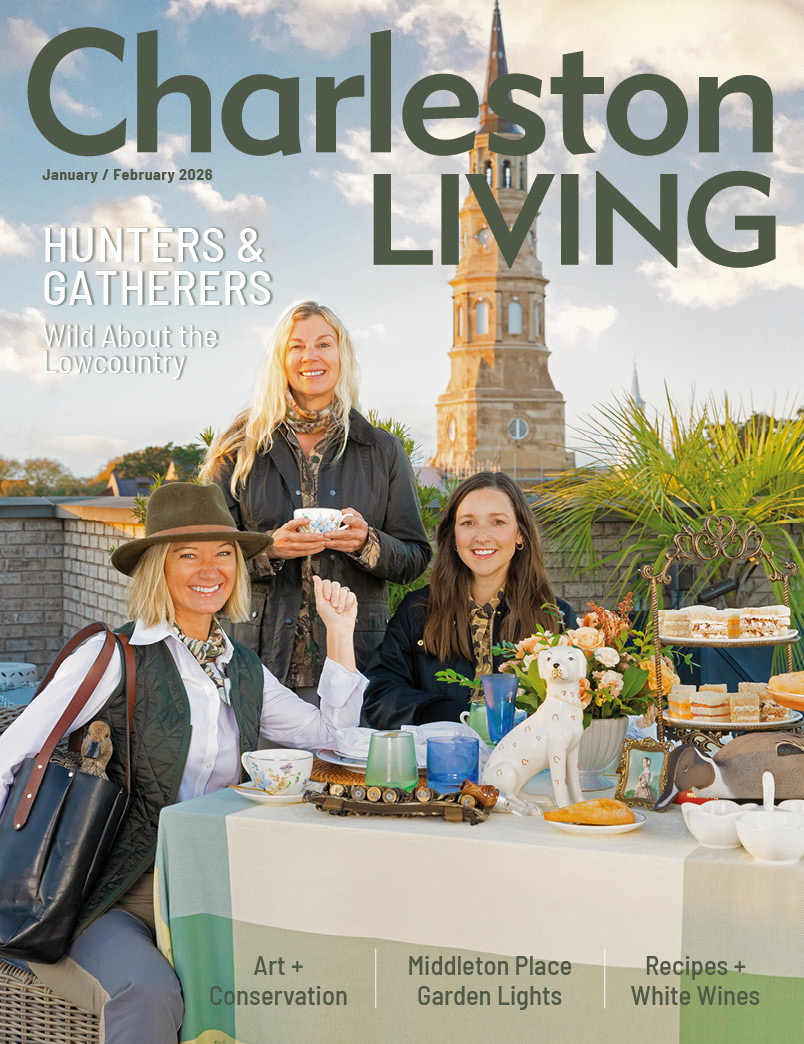In Favor of Fine Art
07 Mar 2019
Bringing diversity through grace to Charleston’s Gallery Mile
BY LEAH RHYNE

Artwork above: Sweet Thing by Tyrone Geter.
On Broad Street, in the space previously occupied by the Ellis-Nicholson Fine Art Gallery, Meisha Johnson is changing the face of Charleston’s Gallery Row with grace, elegance, and a lot of love.
Born and raised in the Upstate, Johnson came by gallery ownership by accident. An educator and child advocate by trade and passion, Johnson taught special needs children within the confines of the South Carolina school system. “The kids were great and the parents were great,” she says. “But the overall system was defunct. I felt like I couldn’t have the impact I wanted to have within the system.” Working as an independent contractor to develop outside arts education systems for students helped, but then an opportunity in Charleston appeared.
Johnson fell in love with the Holy City when visiting her sister at the College of Charleston a decade ago. “It did something with my soul,” she says. Walking the streets, taking in the sights and sounds, she was enamored by the city’s soul. “Its history is so rich, so deep. I love Charleston for reasons other people might not think about. I’m inspired by the folks that built these buildings, the slaves or free men. Their stories are the ones you don’t know. You have to dig for them. Their history.”
She continues, “Charleston history equals African American history, which equals American history. Everywhere you turn here, there are reminders.” Johnson talks of ironwork that is Nigerian, and myriad other African influences throughout the city.
Her passion runs deep, which makes sense in a city like Charleston that changes day-by-day. Ten years ago, she says, the city was a different place. While visiting her sister for a summer all those years ago, Johnson recalls, “I’d go in a store, and people ignored me. That was really big then.” Why? Because of the color of her skin. Johnson is African American.
But there was one part of the city where Johnson never felt out of place. “I frequented Gallery Row every time I visited Charleston. My favorite gallery by far was Ellis Nicholson Gallery. Jeanette Cooper is a beautiful person.” Johnson and Cooper struck up a friendship that lasted, so when Cooper was ready to leave the gallery, serendipity struck. The timing was perfect. Johnson was looking to return to work after marriage and a baby, and the gallery felt right. “I submitted a business plan, and the rest is history.” The new gallery opened its doors on December 1, 2018.
Neema Gallery’s mission is simple: diversity. Johnson wants to diversify the Holy City art world, reflecting the city’s rich cultural heritage. “From a historic standpoint,” she says, “there hasn’t been a big presence of art by African Americans in Charleston. There are a few big names, sure, but I feel like there’s room for improvement, and I want to be a part of seeing that change happen.”
She started with the name. “Neema means favor and grace in Swahili,” she says. “It’s a name that’s been with me a long time. I almost named my daughter Neema because I love it so much.”
Then came the artists. Johnson sought out African-American artists throughout the state of South Carolina, and apart from some of the jewelry creators, every single artist featured in Neema Gallery is either from or resides in South Carolina. From master jewelry creator Charles Pinckney to abstract painter and former news anchor Alicia Barnes John, the gallery is filled with an eclectic array of beautiful and diverse fine art that is driving collectors through her front doors. “I’m super excited,” says Johnson. “I’m selling to a diverse group of people, too. African Americans, Caucasians, Middle Easterns, etc. I’m somehow diversifying who is buying art on this street.”
With plans to run painting, music, and even dance classes for children from the gallery, too, Johnson isn’t leaving her roots behind. The gallery will become a space for a family of artists, musicians, and anyone else with a love of the arts.
Feedback so far has been uplifting. Johnson says, “African Americans from Charleston, they come in here and their mouth falls to the floor. Then a lady attended a show by Charles Pinckney – she’s a collector of his work – and she just said, ‘I’m so happy you’re here. We need you here.’ She said it over and over again.”
Johnson continues, “I don’t desire to be the only art gallery featuring artwork by African American artists. I hope others will open, and maybe even some of my artists will start their own galleries. My goal is diversity on Gallery Row, and we’re accomplishing that, one artist at a time.”












